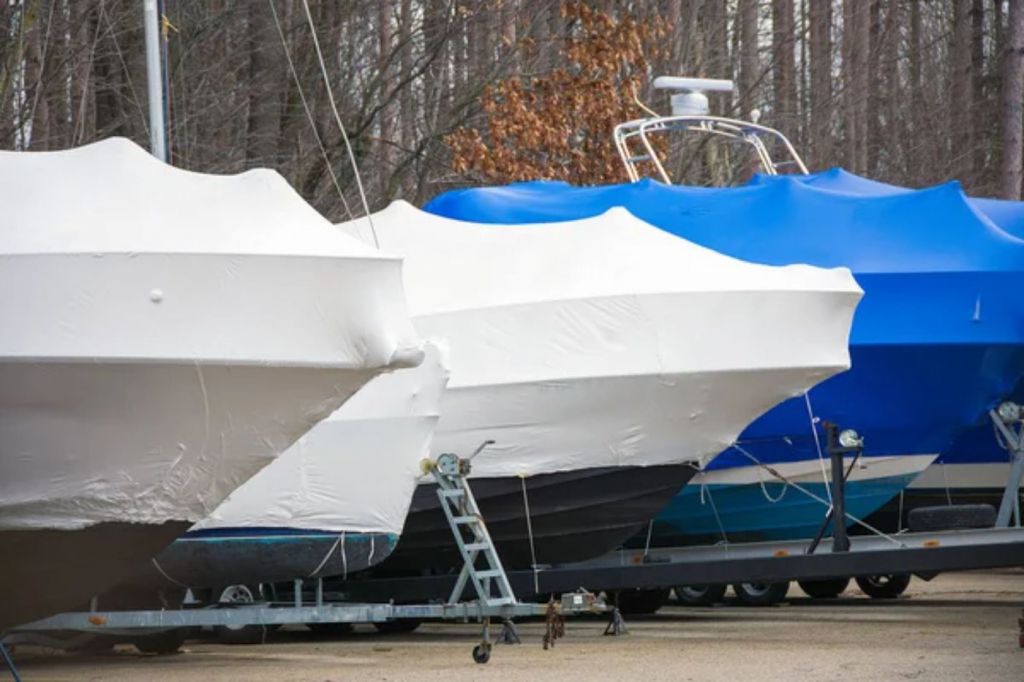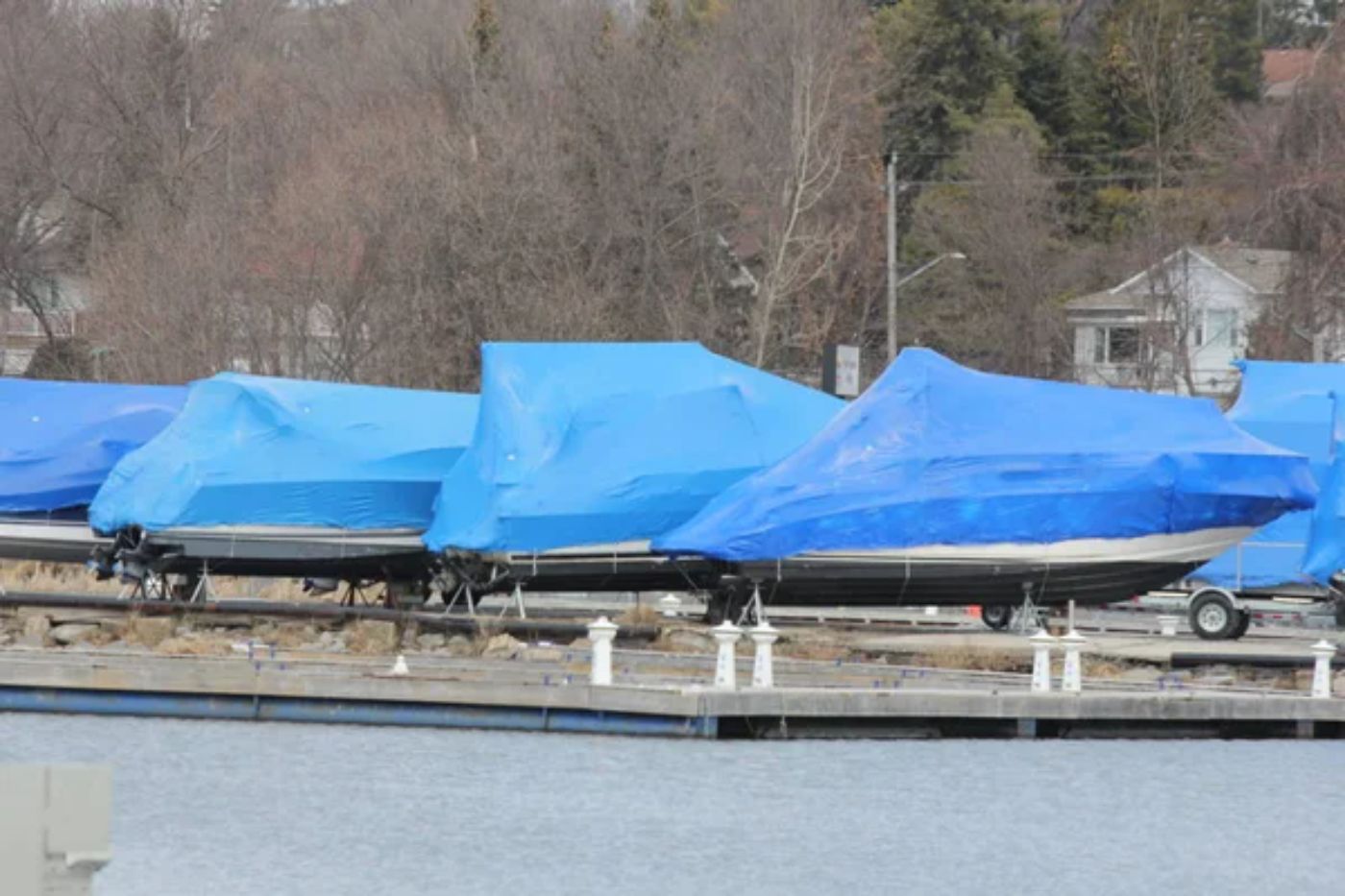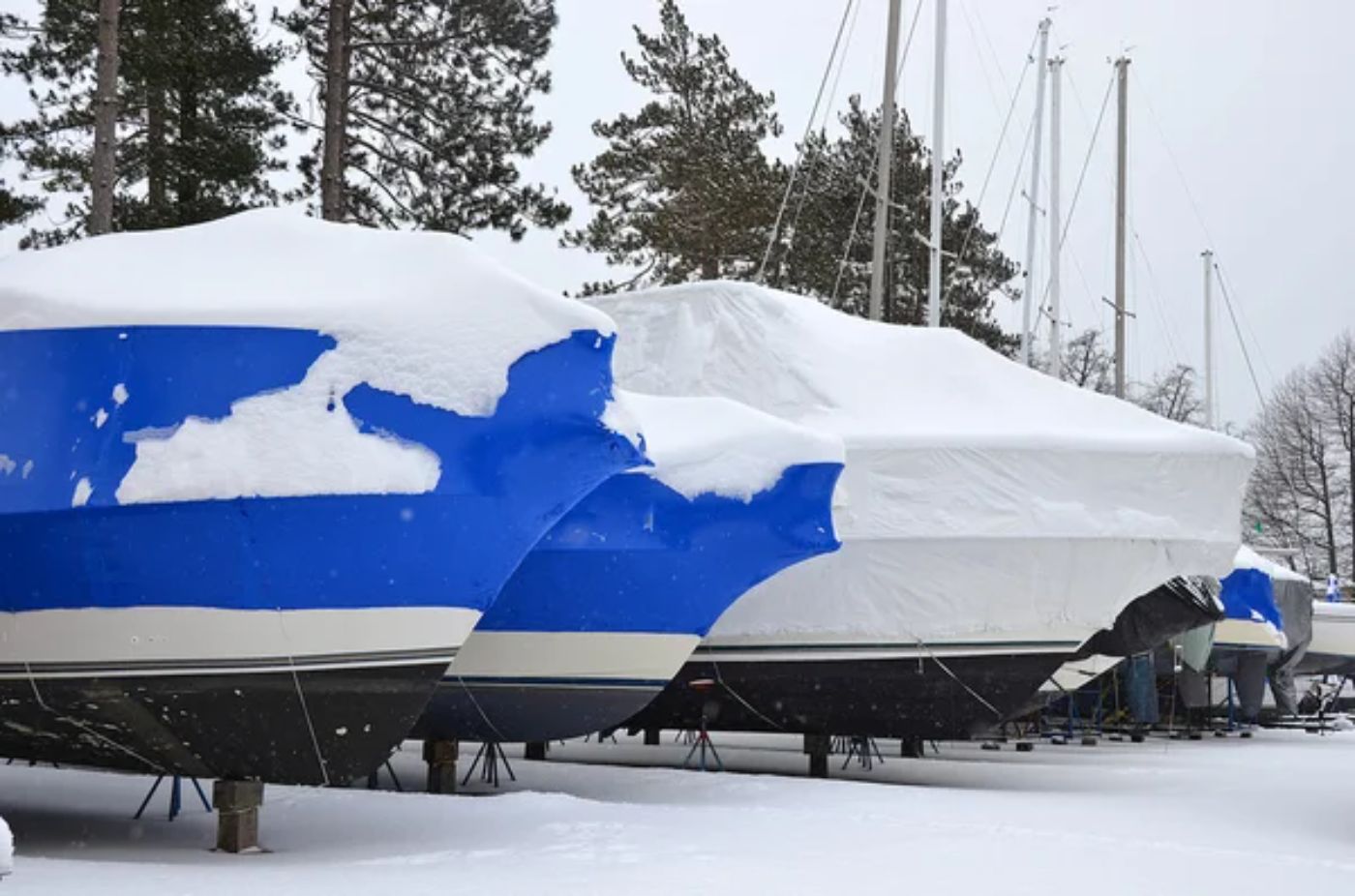How Long Does Boat Shrink Wrap Last?
A shrink wrap can protect your boat from harsh weather conditions and other elements. It is a plastic material that is applied tightly around the boat to create a protective layer. But exactly how long does the boat shrink wrap last?
In general, high-quality shrink wrap materials can last anywhere from 6 months to 2 years or more if properly installed and maintained. However, exposure to harsh weather conditions like strong winds, heavy snow, and extreme temperatures can reduce its lifespan and may cause it to deteriorate more quickly.
Regular inspection and proper storage can help reduce the risk of damage and prolong the lifespan of the shrink wrap. Let's take a closer look at some of the most common issues to look out for when inspecting a shrink-wrapped boat.
Summary
- A boat's shrink wrap can last up to 6–8 months during winter, while it can last for only 2–3 months in high wind conditions.
- In areas with very hot or very cold temperatures, it is not uncommon for shrink wrap to only last for 4–6 months before needing to be replaced.
- A boat shrink wrap made of PVC is the least durable and least environmentally friendly option, with an estimated lifespan of 1–2 years.
- Polyolefin is the most durable and long-lasting material for shrink wraps, with an estimated lifespan of 3–5 years.

On this page:
A Shrink Wrap Can Last Up To 2 Years
The table below shows how different weather conditions affect the lifespan of a boat shrink wrap:
| Weather Conditions | Estimated Average Lifespan |
|---|---|
| Winter season | 6-8 months |
| High wind conditions | 2-3 months |
| Extreme temperature conditions | 4-6 months |
| Sun exposure | 3-4 months |
In general, high-quality shrink wrap materials can last anywhere from 6 months to 2 years or more. However, exposure to harsh weather conditions like strong winds, heavy snow, and extreme temperatures can reduce the lifespan of the shrink wrap.

Pros and Cons of Shrink Wrapping a Boat - Worth It?
A shrink wrap lasts for 6-8 months during winter season
During the winter season, boats are typically stored outdoors for long periods of time, which means they're exposed to snow, ice, and freezing temperatures. These conditions can cause the shrink wrap to deteriorate more quickly and shorten its lifespan.
When snow and ice accumulate on the shrink wrap, it can put a lot of weight and stress on the material. Over time, this can cause the shrink wrap to stretch, tear, or even collapse, which can damage the boat underneath.

Also, when temperatures fluctuate rapidly between freezing and thawing, it can cause the shrink wrap to expand and contract, which can put stress on the material and weaken it over time. This can lead to tears, rips, and other damage that can shorten its lifespan.
A shrink wrap only lasts for 2-3 months in high wind conditions
If you live in an area with high winds, you might need to ensure that the shrink wrap is secure. When winds are strong, they can cause the shrink wrap to flap and billow, which can put a lot of stress on the material.
This stress can cause the shrink wrap to tear or puncture, which can allow water and other elements to get inside and damage the boat. Additionally, it can cause the shrink wrap to rub against the boat's surface, which can cause scratches and other damage.
Over time, this damage can accumulate and shorten the lifespan of the shrink wrap. In high wind conditions, the shrink wrap may only last for 2-3 months before it needs to be replaced. In more moderate conditions, it may last for several months longer.
To prevent this type of damage, you need to properly secure the shrink wrap to the boat using additional straps or ropes to hold the shrink wrap in place and prevent it from flapping in the wind.
Regular inspection of the shrink wrap is also necessary to see signs of damage and repair any tears or punctures as soon as possible.

A shrink wrap can break down in 4-6 months under extreme temperature conditions
If you live in an area with extreme temperatures, such as very hot or very cold conditions, the shrink wrap can be affected. When exposed to high temperatures, the plastic material used in boat shrink wrap can begin to break down and degrade.
Meanwhile, in very cold conditions, the wrap can become stiff and crack, which can also lead to tears and punctures.
In addition to these physical changes, extreme temperature conditions can also cause the adhesive used to secure the shrink wrap to the boat to fail. This can make the shrink wrap loose and allow moisture and other elements to penetrate the boat.
In extreme temperature conditions, it is not uncommon for shrink wrap to only last for 4-6 months before needing to be replaced. To prevent this, you need to make sure that the wrap is properly installed and that any vents or doors are sealed.
Exposure to UV rays can make a shrink wrap deteriorate after 3 to 4 months
UV rays are a form of radiation that is emitted by the sun and can cause damage to many materials, including plastics. When UV rays penetrate the plastic film, they cause a chemical reaction that breaks down the polymer chains in the plastic. This process is known as photodegradation.
As the polymer chains break down, the shrink wrap becomes brittle, loses its elasticity, and can eventually crack and tear. This can lead to the shrink wrap becoming ineffective at protecting the boat from the elements, such as rain, snow, and wind.
In general, boat shrink wrap can last for 3-4 months before it begins to degrade significantly due to UV exposure.
To extend the lifespan of boat shrink wrap, perhaps store the boat in a shaded area or cover the shrink wrap with a UV-resistant material, such as a tarp or cover.
Additionally, some shrink wrap manufacturers offer UV-resistant films that are designed to withstand prolonged exposure to the sun's UV rays.
Other Factors Affecting The Lifespan Of A Shrink Wrap

Aside from weather conditions, there are a few other factors that affect the viability of a boat shrink wrap, such as the following:
The quality and type of shrink wrap material used determine its longevity
The table below shows different types of shrink wrap materials and how long can they last:
| Type of Shrink-Wrap Material | Estimated Lifespan |
|---|---|
| PVC | 1-2 years |
| Polyethylene | 2-3 years |
| Polyolefin | 3-5 years |
The quality of the shrink wrap material refers to its strength, durability, and resistance to tearing and puncturing. High-quality shrink wrap material is made from materials such as polyethylene or polyolefin, which are strong and durable.
These materials are also resistant to UV rays and moisture, which helps to prevent the shrink wrap from deteriorating over time.
There are several types of shrink wrap material available, including PVC, polyethylene, and polyolefin.
-
PVC shrink wrap is the most commonly used type, but it is also the least durable. It can become brittle over time and may crack or break, which can compromise the protection of the product. It is also not environmentally friendly.
-
Polyethylene shrink-wrap is more durable than PVC and is less likely to crack or break. It is also resistant to UV rays and moisture, which helps to prevent the shrink-wrap from deteriorating over time. It is also recyclable.
-
Polyolefin shrink-wrap is the most durable and long-lasting type of shrink-wrap material for boats. It is resistant to UV rays, moisture, and other environmental factors. It is also particularly popular for food packaging, as it is safe for use with food products and does not contain any harmful chemicals.

Proper installation and care of the shrink wrap also play a role in how long it lasts
Shrink wrap that is installed correctly and maintained properly will generally last longer than shrink wrap that is installed poorly or not taken care of. Here are some steps to properly install and care for shrink wrap:
-
Choose the right type of shrink wrap: There are different types of shrink wrap available in the market, such as PVC, polyolefin, and polyethylene. Choose the one that suits your product's needs.
-
Measure and cut the shrink wrap: Measure the length and width of the product and cut the shrink wrap accordingly. Make sure to leave some extra material on the sides to ensure complete coverage.
-
Seal the edges: Use a heat sealer or a shrink wrap machine to seal the edges of the shrink wrap. This will prevent air and moisture from getting inside the wrap and damaging the product.
-
Apply heat: Use a heat gun or a shrink wrap machine to apply heat to the shrink wrap. This will cause the plastic to shrink and conform to the shape of the product.
-
Store the product properly: Once the shrink wrap is applied, store the product in a dry and cool place. Avoid exposing it to direct sunlight or high temperatures, as this can cause the plastic to degrade and become brittle.
Although you can shrink-wrap a boat on your own, a more cost-effective option would be hiring a professional to do it.
The amount of exposure and use the boat shrink wrap experiences also affect its lifespan
The amount of exposure refers to the length of time the shrink wrap is exposed to the elements. The longer the shrink wrap is exposed to sunlight, wind, rain, snow, and other environmental factors, the more likely it is to deteriorate and lose its protective qualities.
The UV rays in sunlight can cause the shrink wrap to become brittle and crack, while wind and rain can cause it to tear and become damaged.
The amount of use refers to the frequency with which the boat is used while covered with shrink wrap. The more the boat is used, the more wear and tear the shrink wrap will experience.
For example, if the boat is used frequently, the shrink wrap may become damaged from the boat's movement and the friction caused by the water.
Potential Damages To Look Out For
Below are some potential damages that can occur to your shrink wrap which you need to be aware of:
Tears and holes
Due to wear and tear, your shrink wrap may develop small tears and holes. While these may seem insignificant, they can allow moisture and other elements to seep in, potentially causing more serious damage to your boat. Try to regularly inspect your shrink wrap for any tears or holes and have them repaired promptly.
Moisture-related issues
Moisture is one of the biggest threats to your boat when it's shrink-wrapped. If moisture is allowed to accumulate under the shrink wrap, it can lead to mold, mildew, and other issues.
You will need to properly ventilate your boat and check for any signs of moisture buildup. If you do notice any moisture-related issues, address them immediately to prevent further damage.
UV damage
While shrink wrap is typically UV-resistant, prolonged exposure to the sun's rays can still cause damage over time. This can lead to discoloration, brittleness, and other issues.
To prevent UV damage, you may want to consider storing your boat in a shaded area whenever possible and inspect your shrink wrap for any signs of wear and tear.
If you're not yet convinced about boat shrink wraps, you can find out in this article which is the best winter cover among boat covers, shrink wraps, and tarps.
Did you find the answer to your specific question?
👍 0 👎 0

Leave a comment